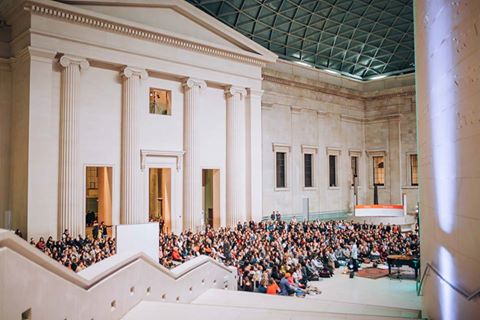In this year’s edition of “Celebrity Big Brother” in the United Kingdom, the group of celebrity housemates won a meditation session as a reward for completing a challenge.
But who was to expect that an innocent little reward like this could create such polarizing opinions and cause a rift between housemates?
Anne Widdecombe, a retired politician, branded it as religious, while Shane Lynch, a member of British band Boyzone, refused to participate because, in his own words, he didn’t want someone to “speak to his psyche like that.”
Both are astonishing misconceptions, but could their attitudes reflect mainstream beliefs of what meditation is today?
There are many ways a person can meditate—the ultimate purpose is to expand one’s awareness and achieve mental clarity, which subsequently leads to emotional calmness and inner bliss.
A leading meditation teacher and director of the Veda Centre, Charlie Knoles, goes on to define meditation as “allowing yourself to experience a natural consciousness state.” He explains that we can all go into a meditative state consciously or subconsciously—such as the moments in the day when you feel more still and more aware than usual—and by becoming comfortable and sustaining this feeling, you are meditating.
The growing popularity of yoga has led to a greater awareness of meditation because the practice adheres to a philosophy known as the eight limbs of yoga. These are eight steps, of which the fourth, pranayama or breath control, fifth, pratyahara or sense control, and sixth, dhanara or concentration, are all practices that lead to the seventh, dhyana or meditation. And the seventh ultimately takes the practitioner to the eighth, samadhi or absolute oneness, which is a state of feeling fully at peace and at one with the universe.
Hence, meditation is often incorporated into a yoga practice, and you are most likely to have experienced it to varying degrees if you’ve ever attended a yoga class.
There are a myriad of meditation techniques, but to make them more easily understood and comprehensive, Charlie Knoles categorised them loosely into four main styles:
Present Moment Awareness
One of the most common and widely used techniques involves increasing your awareness of the physical present—like when we bring attention to a part of the body. Focusing on one’s breath is an example, and is often taught in a yoga class, from simply inhaling and exhaling consciously at a regulated pace, to more advanced pranayama techniques.
Focus Intention
This is a technique where you bring awareness to an idea, an experience, or a projected feeling. Some examples are candle-gazing, whereby a person gazes into the flame, or sound baths, in which a person is immersed in an engulfing sound—these are attempts to clear the mind and gradually bring you to a relaxed state. Another approach is creative visualisation. This is done by imagining yourself being washed over with a sense of peace, or visualising happiness as a colour, and being covered or filled by this colour completely, thus leading to a feeling of being filled with happiness.
Still Point Meditation
There are two main schools of practice for this ancient and traditional style: transcendental or vedic meditation. It involves the use of a mantra—the practitioner is required to sit comfortably with eyes closed as he/she gently repeats the mantra, silently or aloud, for a set length and number of times (all of which depends on the school of practice). The mantra is personal and selected by the teacher, and it’s a sound that resonates with the individual, helping to guide him/her to a state of awareness that transcends the ego, to a feeling of inner peace and “oneness” with the universe.
Movement Meditation
This method involves using a repetitive set of movements which are executed to the count of the breath. In the example of yoga, we practice a fixed sequence of poses like surya namaskar or sun salutation, whereby each transition into a pose coincides with an inhale or exhale. Surya namaskar is often performed at the start of the practice because it takes the entire self (mind, body, and breath) to complete it, which promotes concentration. In Sufism, Sufi whirling is an example of an active movement meditation: a ritualistic dance where the Sufi spins in circles, on the spot, to a state of trance and abandonment.
None of the styles are mutually exclusive, however, and many practitioners will incorporate more than a single style.
A body scan relaxation meditation is one such example. Often taught at the end of a yoga class, the teacher draws attention to the student’s body (present moment awareness) and guides them to feel it relaxing part by part (focused intention) from the feet through to the head, and finally scanning the entire body, taking the student to a deeper state of rest.
When housemate Anne refused to participate, she was adamant that meditation originates from foreign religions and stated that she was Catholic. But meditation isn’t religious, nor is it exclusive to Eastern religious practices. Christians and Catholics have meditative practices too; in those moments of silence, knelt in contemplation or reciting a prayer, a Christian or Catholic focuses their devotion and removes any foreign thoughts to bring them closer to the presence of God. Meanwhile, Shane’s statement suggests he’s misconstrued meditation to possess brain-washing qualities.
Expanding one’s awareness for mental clarity and inner peace—that is meditation, void of religious connotations or any mind-altering intentions.

So how can one learn more or experience meditation?
There are many websites and apps offering videos of guided meditations, but a yoga class is a good place to start because a well-rounded practice should incorporate some meditation, albeit in small doses. Do not feel shy about approaching the instructor, as he/she should have some knowledge on the subject. Studios that are dedicated to teaching yoga tend to offer meditation-only classes in their weekly schedule or specialised workshops in their annual course programmes. Visiting Buddhist Shambhala centers is also another option to learn more about meditation.
Author’s note: In London, consider workshops at Triyoga, The Life Centre, Indaba, or Frame. There’s also been an emergence of meditation communities in London recently such as Meditation: Unlocked, Just Breathe, and The Quiet Club, which organise intimate to large-scale meditation gatherings, offering the opportunity to learn, teach, and inspire.
~
Relephant:
A Basic Buddhism Guide: What is Meditation?
In Meditation, there is only One Rule.
~
Author: Hongyi Huang
Images: With permission from @jake_paul_white & @justbreathelondon
Editor: Catherine Monkman
Copy & Social Editor: Travis May








Read 0 comments and reply